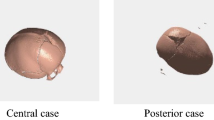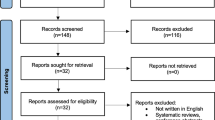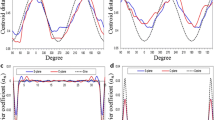Abstract
The development of an objective algorithm to assess craniosynostosis has the potential to facilitate early diagnosis, especially for care providers with limited craniofacial expertise. In this study, we process multiview 2D images of infants with craniosynostosis and healthy controls by computer-based classifiers to identify disease. We develop two multiview image-based classifiers, first based on traditional machine learning (ML) with feature extraction, and the other one based on CNNs. The ML model performs slightly better (accuracy 91.7%) than the CNN model (accuracy 90.6%), likely due to the availability of a small image dataset for model training and superiority of the ML features in differentiation of craniosynostosis subtypes.
Access this chapter
Tax calculation will be finalised at checkout
Purchases are for personal use only
Similar content being viewed by others
References
S. Agarwal, R.R. Hallac, R. Mishra, C. Li, O. Daescu, A. Kane, Image based detection of craniofacial abnormalities using feature extraction by classical convolutional neural network, in 2018 IEEE 8th International Conference on Computational Advances in Bio and Medical Sciences (ICCABS) (IEEE, Piscataway, 2018)
Q. Cao, L. Shen, W. Xie, O.M. Parkhi, A. Zisserman, Vggface2: a dataset for recognising faces across pose and age, in International Conference on Automatic Face and Gesture Recognition (2018)
J. Cho, K. Lee, E. Shin, G. Choy, S. Do, How much data is needed to train a medical image deep learning system to achieve necessary high accuracy? (2015, preprint). arXiv:1511.06348
M. Cho, A. Kane, J. Seaward, R. Hallac, Metopic “ridge” vs. “craniosynostosis”: quantifying severity with 3d curvature analysis. J. Cranio-Maxillo-Facial Surg. 44(9), 1259–1265 (2016). https://doi.org/10.1016/j.jcms.2016.06.019
M.J. Cho, R.R. Hallac, M. Effendi, J.R. Seaward, A.A. Kane, Comparison of an unsupervised machine learning algorithm and surgeon diagnosis in the clinical differentiation of metopic craniosynostosis and benign metopic ridge. Sci. Rep. 8(1), 6312 (2018)
S. Cronqvist, Roentgenologic evaluation of cranial size in children: a new index. Acta Radiologica. Diagnosis 7(2), 97–111 (1968). https://doi.org/10.1177/028418516800700201
N. Dalal, B. Triggs, Histograms of oriented gradients for human detection, in 2005 IEEE Computer Society Conference on Computer Vision and Pattern Recognition (CVPR’05), vol. 1 (IEEE, Piscataway, 2005), pp. 886–893
J. Deng, W. Dong, R. Socher, L.J. Li, K. Li, L. Fei-Fei, ImageNet: a large-scale hierarchical image database, in Conference on Computer Vision and Pattern Recognition CVPR09 (2009)
A. Fitzgibbon, M. Pilu, R.B. Fisher, Direct least square fitting of ellipses. IEEE Trans. Pattern Anal. Mach. Intell. 21(5), 476–480 (1999)
R.M. Garza, R.K. Khosla, Nonsyndromic craniosynostosis, in Seminars in Plastic Surgery, vol. 26 (Thieme Medical Publishers, New York, 2012), pp. 053–063
R.R. Hallac, B.M. Dumas, J.R. Seaward, R. Herrera, C. Menzies, A.A. Kane, Digital images in academic plastic surgery: a novel and secure methodology for use in clinical practice and research. Cleft Palate-Craniofacial J. 56(4), 552–555 (2019)
R.R. Hallac, J. Lee, M. Pressler, J.R. Seaward, A.A. Kane, Identifying ear abnormality from 2d photographs using convolutional neural networks. Sci. Rep. 9(1), 1–6 (2019)
K. He, X. Zhang, S. Ren, J. Sun, Deep residual learning for image recognition, in Proceedings of the IEEE Conference on Computer Vision and Pattern Recognition (2016), pp. 770–778
D. Johnson, A.O. Wilkie, Craniosynostosis. Eur. J. Hum. Genet. 19(4), 369–376 (2011)
V. Kazemi, J. Sullivan, One millisecond face alignment with an ensemble of regression trees, in Proceedings of the IEEE Conference on Computer Vision and Pattern Recognition (2014), pp. 1867–1874
S. Khan, N. Islam, Z. Jan, I.U. Din, J.J.C. Rodrigues, A novel deep learning based framework for the detection and classification of breast cancer using transfer learning. Pattern Recognit. Lett. 125, 1–6 (2019)
W. Liu, Z. Wang, X. Liu, N. Zeng, Y. Liu, F.E. Alsaadi, A survey of deep neural network architectures and their applications. Neurocomputing 234, 11–26 (2017)
S.J. Pan, Q. Yang, A survey on transfer learning. IEEE Trans. Knowl. Data Eng. 22(10), 1345–1359 (2009)
R.R. Selvaraju, A. Das, R. Vedantam, M. Cogswell, D. Parikh, D. Batra, Grad-cam: why did you say that? Visual explanations from deep networks via gradient-based localization. CoRR abs/1610.02391 (2016). http://arxiv.org/abs/1610.02391
J. Shillito, D.D. Matson, Craniosynostosis: a review of 519 surgical patients. Pediatrics 41(4), 829–853 (1968)
H. Su, S. Maji, E. Kalogerakis, E. Learned-Miller, Multi-view convolutional neural networks for 3d shape recognition, in Proceedings of the IEEE International Conference on Computer Vision (2015), pp. 945–953
F. Ursitti, T. Fadda, L. Papetti, M. Pagnoni, F. Nicita, G. Iannetti, A. Spalice, Evaluation and management of nonsyndromic craniosynostosis. Acta Paediatr. 100(9), 1185–1194 (2011)
P. Viola, M. Jones, Rapid object detection using a boosted cascade of simple features, in Proceedings of the 2001 IEEE Computer Society Conference on Computer Vision and Pattern Recognition. CVPR2001, vol. 1 (IEEE, Piscataway, 2001), p. I
Author information
Authors and Affiliations
Corresponding author
Editor information
Editors and Affiliations
Rights and permissions
Copyright information
© 2021 Springer Nature Switzerland AG
About this paper
Cite this paper
Agarwal, S., Hallac, R.R., Daescu, O., Kane, A. (2021). Classification of Craniosynostosis Images by Vigilant Feature Extraction. In: Arabnia, H.R., Deligiannidis, L., Shouno, H., Tinetti, F.G., Tran, QN. (eds) Advances in Computer Vision and Computational Biology. Transactions on Computational Science and Computational Intelligence. Springer, Cham. https://doi.org/10.1007/978-3-030-71051-4_23
Download citation
DOI: https://doi.org/10.1007/978-3-030-71051-4_23
Published:
Publisher Name: Springer, Cham
Print ISBN: 978-3-030-71050-7
Online ISBN: 978-3-030-71051-4
eBook Packages: Computer ScienceComputer Science (R0)




